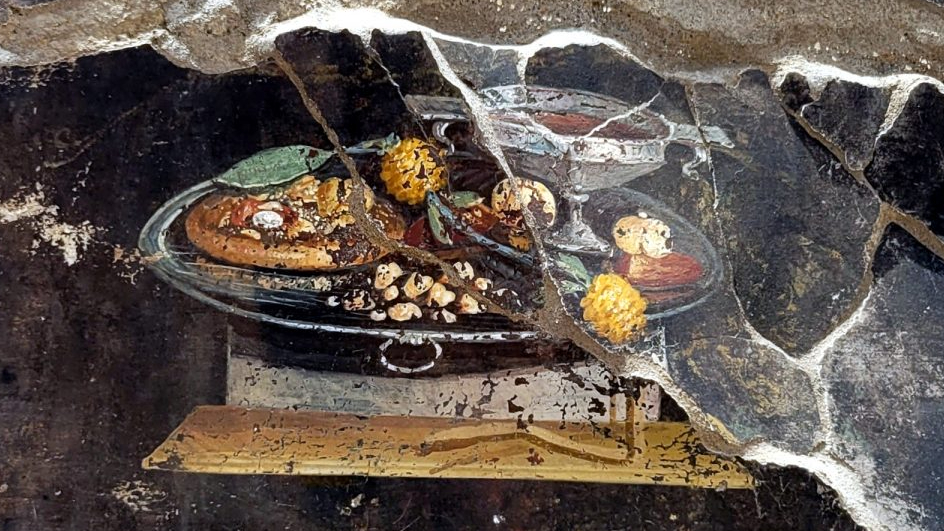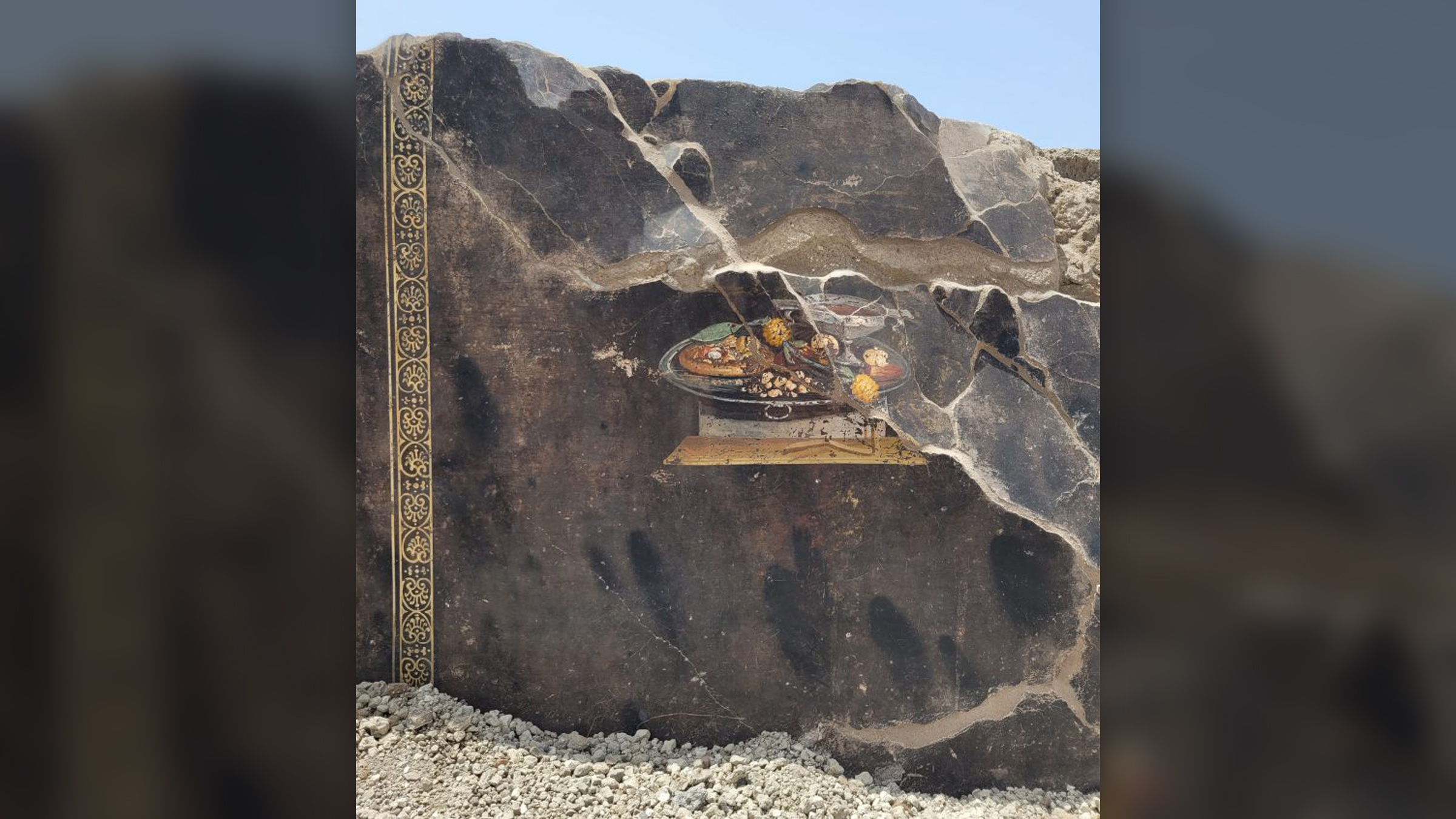2,000-year-old 'not a pizza' fresco discovered in Pompeii
A 2,000-year-old Pompeian fresco offers a mouthwatering taste of the Roman diet.

Archaeologists in Pompeii have discovered a still-life fresco of a Mediterranean meal that looks good enough to eat. But if you think it looks like a pizza, hold the cheese.
Pizzas as we know them today, with tomato and mozzarella, weren't baked in Italy until the 1800s. Instead, the Roman fresco likely features a flat focaccia — food that was commonly eaten in the town before it was destroyed in the A.D. 79 eruption of Mount Vesuvius.
The Archaeological Park of Pompeii unveiled the small fresco on June 27. The image was found during recent excavations in Regio IX, a section of the ancient town that contained a mix of residential houses and commercial structures, such as a laundry and a bakery, as well as the skeletal remains of at least three people.
Against a black background, the still-life includes a full wine glass on a silver tray, dates, pomegranates and a garland of yellow berries next to a blue stick wrapped in a red ribbon. However, the carbs on the left of the tray have attracted the most attention.
"How can we not think about pizza," Archaeological Park of Pompeii director general Gabriel Zuchtriegel said in a statement, noting it was a food "born as a 'poor' dish in southern Italy that has now conquered the world."
Related: Ancient Pompeii 'fast-food' spot lured customers with sexy logo

Hallmarks of pizza, though, include mozzarella and tomato sauce, neither of which was available to the ancient Romans living in Pompeii, an ancient vacation destination. Tomatoes weren't introduced to Europe until the 16th century, while mozzarella was likely first made in the 11th century.
Sign up for the Live Science daily newsletter now
Get the world’s most fascinating discoveries delivered straight to your inbox.
But the Romans did have something they called panis focacius, meaning "hearth bread," which consisted of a yeast dough made with flour, olive oil, water and salt — a basic recipe that has been passed down through the millennia as focaccia. This meal fits with the painting, which has colorful dots that appear to represent a flatbread with spices and condiments such as pesto, according to archaeologists.
The still-life at Pompeii is a genre of painting called xenia — a motif that represents gifts of hospitality — the archaeologists said. The placement of this fresco in the atrium of a house could therefore reflect the homeowner's desire to treat guests well. About 300 of these still-lifes have been found at Pompeii and nearby towns.
References to focaccia-like bread can also be found in Latin literature, where several Roman authors describe vegetables, fruits, garlic, herbs and cheese like pecorino Romano spread on flatbread as a typical frugal meal.
The simple meal rendered in vibrant colors on the wall of a large house reflects an intriguing contrast, as it "reminds us of a sphere that stands between the pastoral and the sacred on one side, and the luxury of the silver trays and the refinement of the artistic and literary representations on the opposite side," Zuchtriegel said.
Excavations at Regio IX are ongoing, covering an area of around 35,000 square feet (3,200 square meters).

Kristina Killgrove is a staff writer at Live Science with a focus on archaeology and paleoanthropology news. Her articles have also appeared in venues such as Forbes, Smithsonian, and Mental Floss. Killgrove holds postgraduate degrees in anthropology and classical archaeology and was formerly a university professor and researcher. She has received awards from the Society for American Archaeology and the American Anthropological Association for her science writing.









